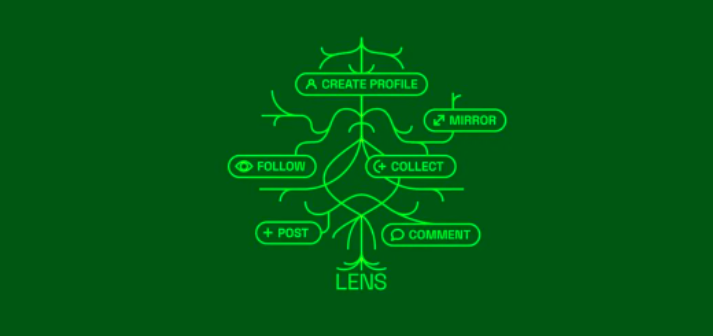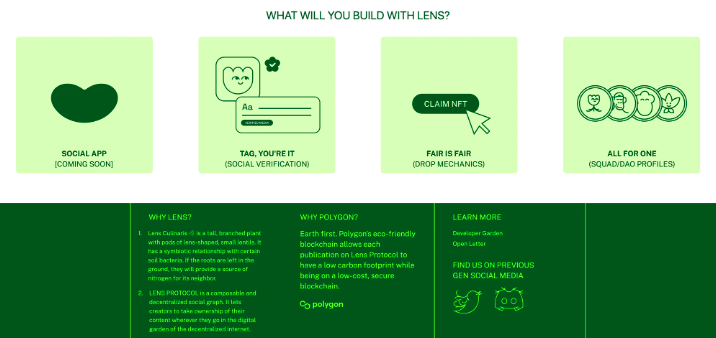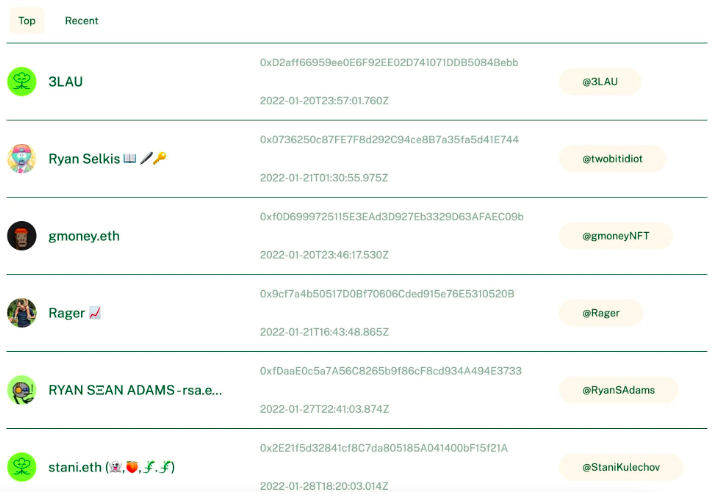An Overview of Web3 Social Media Protocol Lens Protocol: A Powerful Tool for Building Web3 Platforms
Original Title: 《Lens Protocol》
Original Author: Will Jiang, The SeeDAO
The founder of Lens Protocol, Stani Kulechov, described on Twitter that Lens is "an open, composable Web3 social media protocol that allows anyone to create non-custodial social media profiles and build new social media applications." The protocol is primarily designed to help developers build Web3 native social media. Any application built on Lens can expand the social graph and benefit all applications within the ecosystem.
1: What Problem Does Lens Protocol Solve?
If Lens Protocol merely aimed to build a decentralized social platform, it would not stand out as an impressive project. Lens points out that current social platforms are fighting their own battles, with high and difficult migration costs between platforms, and the information walls of Web2 have turned social media into a zero-sum game.
To do a good job, one must first sharpen their tools. Lens Protocol is not a platform, but a set of tools for building platforms; developers can freely use this toolkit to create Web3 social platforms that meet their needs. The community has the freedom to develop the features users need and the platform interfaces they want to connect with; every user can benefit from the entire ecosystem, zero-sum game ❌ collaborative game ⭕️.

2: Main Features of Lens Protocol
Lens Protocol defines several key functional concepts, but it allows developers to build their social applications using modular components. It encourages developers to create new components that enhance product experience; external applications can also connect to Lens and share the advantages of the Lens ecosystem.
Personal Homepage NFT --- Profile
The personal homepage NFT is a symbol of account ownership, freeing users from the constraints of passwords and accounts; the number of NFTs owned corresponds to the number of accounts. This is one of the most important concepts of Lens. The homepage NFT records all historical activities of an account (posts, interactions).
Publishing Content --- Publication
Content is the soul of social interaction, and each post is directly linked to the homepage NFT (after using Lens, many NFTs will appear in the Poly address). In addition to reposting and commenting, the posting feature includes two additional functions (Collect Module: users can mint the original post as an NFT; Quote Mode: determines who can repost and comment).
Comments / Reposts --- Comment / Mirror
Often, comments can be as engaging or even more exciting than the original post, but due to the limitations of Web2, comments have not had the space to shine. Therefore, Lens confirms that it wants to achieve this: users own their comments.
Lens refers to reposting as mirroring; however, the reposting function is limited by the settings of the original post.
Collecting --- Collect
Creative content can be directly collected and purchased by users. The monetization channels for quality content become more direct and fair, greatly incentivizing continued creativity. By using the Collect module, creators can even set specific time periods for NFT sales. This is also similar to the traditional paid reading experience.
Following --- Follow
Following is also recorded; this means that early followers of quality accounts will become recipients of future airdrops or benefits (this is the charm of blockchain culture).
Community Management + Built-in DAO? --- Built-In Governance
Since there is a community, with identity verification, and it is on-chain; why can't popular projects directly establish a DAO on Lens? Yes, Lens has thought of this, so it created community management features, allowing users with specified identity verification to become governance members of a community.
Again, these features are just the basic functionalities; communities and users can develop their own features and gameplay based on these foundations; subsequently, every community on Lens will develop features and rules that perfectly match their needs, directly revitalizing the entire Web3 social landscape.

3: Lens Protocol & Competitors
Currently, whether in Web2 or Web3, users are still primarily concentrated on centralized platforms like Twitter, YouTube, or Discord for social interaction. It is not difficult to find that many Web3 social platforms suffer from the common issue of replicating the platform structure and gameplay of Web2, with limited features, few users, and inactive communities. Many Web3 creation teams are also small, with slow updates on new features, leading users to feel constrained and naturally not stay long.
RSS3
RSS3 Protocol is a platform-less aggregation media; it is completely open-source, allowing everyone to see the entire code of the project, modular, and developers can freely develop features according to their needs. RSS3 can be likened to a highly extensible decentralized port, where any type of information can be linked to this port and efficiently output and displayed. The RSS3 protocol connects four levels of blockchain media: creation, storage, distribution, and rendering. RSS3 also appeared before Lens Protocol, and many products have already started using the RSS3 protocol, making it a powerful tool for ecosystem development.
In fact, Lens Protocol and RSS3 share many similarities; stepping back, we can understand their differences this way: the RSS3 protocol connects non-homogeneous sources and different levels of information, making it more suitable for developing product structures compared to Lens. Lens Protocol can also be used to develop structures and provides tools for managing DAOs, making it more suitable for creating highly interactive products compared to RSS3.
4: Community & Community Building
The Lens community is relatively quiet; because the protocol is more focused on developers, everyone is seriously developing. However, Lens Protocol's official members can often be seen participating in various roundtable discussions, which is also a way to actively engage with the community.
On the official website of Lens Protocol, there is an open letter that everyone can sign with their wallets, which roughly states:
Social media has become a part of our modern identity, and the emergence of Web3 has created broader opportunities and more possibilities for social interaction. We call on everyone to actively own social media and their internet identity through Lens Protocol.
Many blockchain influencers on Twitter (Messari founder Ryan Selkis, BlockRoots founder Rager?), KOLs (gmoney.eth, Andrew Wang), and various celebrities active in Web3 (top DJ-3LAU) have left wallet signatures, proving that Lens Protocol has a significant impact. The author also participated in this electronic signature, perhaps hoping to qualify for future airdrops.

Lens Protocol has now launched on the Mumbai testnet of Polygon. No products from Lens's official team have been launched yet, nor has any token been issued. The sky is the limit; the open-source and modular design gives Lens more possibilities. With the support of Lens, development projects will become faster, and Lens will help make Web3 projects richer, more interesting, and more diverse.











